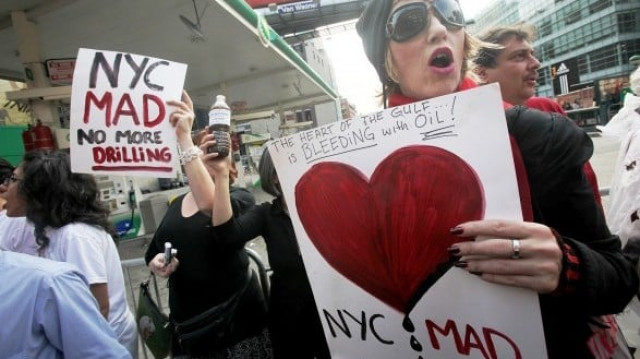BP rushes new plan to stem Gulf oil leak

Hours after the British oil giant acknowledged failure in its "top kill" attempt to plug the underwater well, company officials said it could take a week to implement the next bid placing a cap over the leak.
"Right now we are going to a containment operation," BP Managing Director Bob Dudley told CNN's "State of the Union" program Sunday of the latest attempt to deal with the ruptured well nearly a mile (1,600 meters) under water. "Because this is being done at 5,000 feet with robots, we're going to take our time, do it extremely carefully.
By the end of the week, we should have this in place," Dudley said. While the "top kill" would have sealed the well using a combination of heavy drilling fluid and eventually cement, the new effort aims only to contain most of the leak, and might temporarily increase the amount of oil gushing into the Gulf of Mexico, officials said.
The well will only be sealed when BP finishes drilling two relief wells, but those are not expected to be ready until August. In the meantime, hundreds of thousands of gallons of oil spew uncontrolled into the sea each day. At least 20 million gallons are now estimated to have leaked into the ocean since the BP-leased Deepwater Horizon oil rig exploded on April 20 and sank, killing 11 workers.
Some 500 people braved rains in New Orleans' French Quarter Sunday to denounce BP for its Gulf of Mexico oil spill, as well as the Barack Obama administration's response to the disaster. The crowd that filled an outdoor amphitheater on the Memorial Day holiday weekend was larger and possibly angrier than expected.
"Eco-murderers!" shouted Belinda Sopczak of New Orleans. Her protest sign featured a crude sketch of a black skull with the British energy giant's green and yellow logo over both eye sockets, and bearing the words "British Polluters." President Obama's top environmental advisor, Carol Browner, said on Sunday that it was possible that "we will have oil leaking from this well until August when the relief wells will be finished."
The new bid underway involves using robots to sever a damaged riser pipe carrying oil from the wellhead and placing a containment device called a Lower Marine Riser Package (LMRP) over the leak. Oil would then be siphoned from the device up to a container ship at the surface.
But the process could actually increase the amount of oil leaking into the sea, and it is uncertain how much oil would be contained, Browner said on CBS's "Face the Nation. "When you cut the riser, the kink may be holding some of the oil in and so we could see an increase, experts are saying, of as much as 20 percent," she said, adding the increase could last four to seven days as the cap is prepared.
"Once the cap is on, the question is how snug is that fit? If it's a snug fit then there could be very, very little oil. If they're not able to get a snug fit then there could be more." That is a nightmare scenario for a region under siege and increasingly frustrated by the lack of progress.
On Friday, Obama visited Louisiana for the second time since the spill began, and he pledged Saturday to do whatever it takes to help those whose livelihoods have been upended by the catastrophe. "We will not relent until this leak is contained, until the waters and shores are cleaned up, and until the people unjustly victimized by this manmade disaster are made whole," he said.
White House spokesman Robert Gibbs said in a statement that at a briefing with Obama Sunday, retired US Coast Guard admiral Thad Allen, the government's point man for the spill, said the federal containment effort had redoubled. "Officials on the ground have increased efforts to be more responsive to needs identified by local communities," Allen said, according to Gibbs.
Since the spill began, an estimated 12,000 to 19,000 barrels of crude have leaked into the Gulf each day. The disaster has already closed stretches of coastal fishing waters, endangering the seafood industry and tourism, and threatening a catastrophe for Louisiana marshes, home to many rare species.
Government data released Thursday suggested between 18.6 million gallons and 29.5 million gallons of oil have poured into the Gulf far more than the roughly 11 million gallons of crude spilled in the 1989 Exxon Valdez disaster. The spill has been a public relations nightmare for BP, which faced new allegations of negligence Sunday after The New York Times said internal company files showed the firm had serious concerns about the Deepwater rig weeks before the accident.
Congressman Ed Markey, who forced BP to make available a live video feed of the oil leak, said Sunday he had "no confidence whatsoever in BP." "BP has been making it up as they go along the whole way," he said on "Face the Nation."



















COMMENTS
Comments are moderated and generally will be posted if they are on-topic and not abusive.
For more information, please see our Comments FAQ